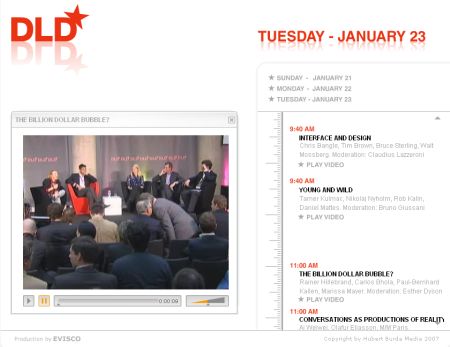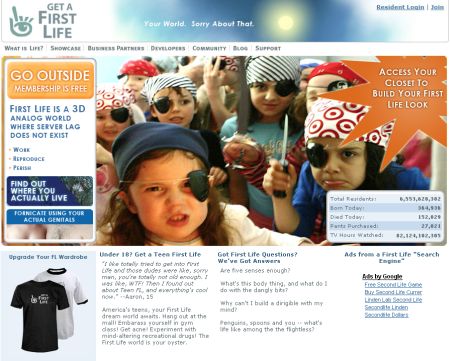von Roland Hachmann | Jan. 27, 2007 | Blog, Digital Culture, Marketing Trends, Social Media Marketing
Nicholas Carr has an interesting post titled: Honey, I shrunk the culture
In this post, he goes on about the fact that the new possibilities to deliver and consume content – i.e. through wikis, blogs, youtube-style videos, etc. – we all receive micro-chunked particles of information that increases our propensity to turn into ADD victims. That might be useful for managing that information but it also means, that our attention decreasingly focuses on longform content:
Many of man’s greatest works demand and deserve extended, steady attention. They can’t be boiled down. They can’t be snippetized, widgetized, or otherwise turned into bite-sized morsels. You can’t compress culture into a Zip file.And that’s the danger here. The new medium doesn’t just promote the proliferation of small pieces; it devalues the long form. In fact, it doesn’t even make room for big, extended works. It’s actively biased against them, technologically and economically.
Scary, if we loose the ability to focus on longform content in the future! But at the same time I think you need to differentiate between types of content. I don’t need the news in longform content, as long as the main facts are delivered. Many articles I read in newspapers in the past focused too much on storytelling for news where I was only interested in the main facts.
But: sometimes storytelling is important. Either because there are news that I want to have some background information on (and while newspapers and magazines are generally prognosed to face a difficult future, I still think this deliverance of background information is a good niche for them, when trying to compete with online media). Or, because we are really interested in the story, the athmosphere and the characters, much more than pure facts and the plot (i.e. facts).
I don’t think, for example, that it would delight many people, to read the last Harry Potter through a number of interlinked microchunks on the internet. We want that book, and we will take our time to read it, the more pages, the better!
von Roland Hachmann | Jan. 25, 2007 | Blog
Some might have seen it already: I had some database problems over the last couple of hours. This was due to the fact that during some maintenance work the databases got lost (don’t ask!).
Unfortunately, my brothers and I were moving to a new, much better server over the last few months. This blog was already sitting on the new server, on which – because of some miscommunication – nobody had turned on the automatic backup function yet. So it’s back to december, when the last backup was made on the old server…
So that’s why the last post before this is was from xmas.
But I made use of something that usually bothers webmasters: the fact that Google caches websites for at least 2 weeks. I copied the contents from the Google cache and will repost them under the respective dates in the next few days. That way, I will only have lost a few days worth of posts from the first half of January…
[26.01.07: Most posts of January are now recovered.]
von Roland Hachmann | Jan. 23, 2007 | Blog, Digital Culture, Digital Marketing
Ok, there goes the weekend. Guess I’ll be pretty busy – I just found out that you can watch all the videos of the “Digital Life Design†Day on the DLD 07 Media Website. See Marissa Mayer of Google speak about the billion dollar bubble or John Naisbitt about “Mind Set!â€, probably based on his new book. Or Luc Besson, Craig Newmark, David Sifry, Arianna Huffington. See? Guess you’ll be busy, too. 
von Roland Hachmann | Jan. 22, 2007 | Blog, Digital Culture, Social Media Marketing
Love it! Werbeblogger just pointed me to a cool siteGet a first life (go outside, membership is free).
And of course it lists total residents (6+ billion), you can get first life clothing for real dollars (at cafepress.com), in a 3D analog world, where server lag does not exist. Hhm, maybe I should try that sometime.
von Roland Hachmann | Jan. 20, 2007 | Blog, Digital Marketing, Digital News, Online Advertising
On the Church of the Customer Blog is an interesting Post about CBS Subscription figures on YouTube.
in the first three months of having CBS content on YouTube more than 40,000 people subscribed to the CBS channel. Plus, it had tallied 75 million total views of the 700+ CBS-uploaded videos.
They calculate out the possible (!) longer term figures resulting in more than 300 million pageviews and 160.000 subscribers. But the number of 160.000 is much more important and valueable than the number of pageviews.
Subscriber growth is really the new keystone measure of success because it’s the best indicator of your ability to create loyalty.
This is absolutely true. For some reason, we have forgotten about the bursting bubble a few years back and we have again started talking about millions of video and page views and downloads (and pageviews are no longer a strong currency).
But the true value of the new web2.0 platforms doesn’t reside in the reach of eyeballs itself, but in the stickiness factor of glueing these eyeballs to the site, day after day. Loyalty, in a word. And the possibility to extract complex profiles through user data and behaviour for targetting, as well as maximising the frequency of interaction by the user through this knowledge. Ever more important, since most web2.0 business models are relying on advertising for funding. (And it can’t all just be Google Adsense, I suppose.)
So, in order to avoid the web 1.0 bubble, you should ask the following questions when considering web2.0 business models.
- Will users come back frequently for new content? Easy in communities of user generated content, you should think, because the content changes all the time. But then: what is the start-page of the user for any given page? When I go to YouTube, it shows some of the latest videos, which makes it interesting everyday. Visiting Flickr, I see my own pictures&profile first and I have to click through a couple of menues in order to get to any new or interesting pictures. The first view of flickr is usually quite boring, even though the whole site is based on user generated content. So you need to consider if the page is actually suggesting added value right from the beginning.
- Can users easily be identified as unique users based on a registration? I suppose all web2.0-ish plattforms require the users to register in a more or less detailed way in order to publish content. However, not all websites make it easy to sign on, i.e. automatic sign on. Some platforms recognise you through a cookie, so that you don’t have to login, some don’t – so the user gets a generic start page. These users might spend a considerable amount of time on the site without registering and we will never be able to match their clickpaths to their profile.
- Will it be possible to profile these users on preferences? Speaking of visitors having to register, are we asking them for their preferences? Are we trying to find out, what they are interested in and what areas of interest they may talk to them about in the future? (In order to offer more targetted advertising, of course.)
- Will it be possible to profile these users based on behavioural data? And if they don’t register for certain topics, will we at least gain insights through behavioural data, measuring and tracking their paths through our website in order to find out, what they like? Would we even have it on top of the other data they gave us during registration (which would be best)?
Eyeballs are valuable, no doubt. But eyeballs that we know certain things about are even more valuable, especially if we can differentiate between the eyeballs of the top 20% and the other 80% – thinking about the Pareto principle. In future, those web 2.0 platforms will succeed, that can link the pure webstats to concrete user profiles that offer the possible insights of “qualified leads†to companies advertising on that site.
All of this is already possible, I think, but at the same time I get the feeling, that most web2.0 sites are still mostly interested in maximising eyeballs and (general) profiles – neglecting the deeper profiling opportunities that advertisers will soon ask for.



 Wo ich sonst so bin...
Wo ich sonst so bin...